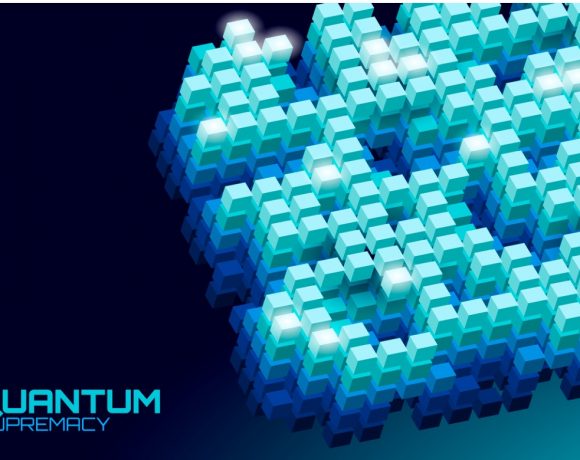- Quantum physics has led to many areas of research. Quantum computing, harnesses the laws of quantum mechanics to solve problems too complex for classical computers. Quantum communication is a field of applied quantum physics closely related to quantum information processing and quantum teleportation. Quantum sensing improves the accuracy of how we measure, navigate, study, explore, see, and interact with the world around us by sensing changes in motion, and electric and magnetic fields.
- This overview report in the development of quantum computing and technologies in the APAC region, through the Swissnex locations (Australia, China, India, Japan, Korea and Singapore) showcases excellence in quantum research and technologies in Asia and Australia, with the objective of nurturing the possibility of establishing research cooperation between Switzerland and these countries.
We are in the midst of a second quantum revolution. The first quantum revolution gave us new rules that govern physical reality. The second quantum revolution will take these rules and use them to develop new technologies¹.
In October 1900, a revolution in physics began unnoticed. On this day, Max Planck presented a new radiation law, which described the energy distribution of thermal radiation. Later it became clear that this law was incompatible with classical physics and required a revolution in the understanding of radiation and energy, i.e. that radiation consists of energy packets, the quanta. His work helped lay the foundation for quantum physics².
Following theoretical work by Paul Benioff, Richard Feynmann proposed building quantum computers to simulate quantum systems in 1981. Quantum computers are a reality today. In 1998 researchers at the Los Alamos National Laboratory, the Massachusetts Institute of Technology, and the University of California at Berkeley created the first quantum computer (2-qubit) that could be loaded with data and output a solution. Although the system was coherent for only a few nanoseconds and not very useful in solving meaningful problems, it demonstrated the principles of quantum computation. IBM has recently announced that it has created the world’s largest quantum computer with 433 qubits, which would have the potential to run complex quantum computations well beyond the computational capability of any classical computer³.
Quantum physics has led to many areas of research. Quantum computing, harnesses the laws of quantum mechanics to solve problems too complex for classical computers⁴. Quantum communication is a field of applied quantum physics closely related to quantum information processing and quantum teleportation⁵. Quantum sensing improves the accuracy of how we measure, navigate, study, explore, see, and interact with the world around us by sensing changes in motion, and electric and magnetic fields⁶.
Quantum is a strategic area for all advanced economies in the world, as it can deliver solutions for almost all aspects of our daily lives, whether it be in agriculture, healthcare, financial services, manufacturing, communications, energy, etc. However, it can also an area where, because of the dual-use nature of some of the products that are being developed using quantum technologies, such as cryptography, it may quickly become a topic for national security. Quantum information technologies will almost certainly have significant impacts on national security— touching everything from extremely secure communications to faster code breaking to better detection of aircraft and submarines⁷.
Switzerland has promoted quantum technologies from a very early stage with its cutting-edge research, excellent infrastructure and many innovative SMEs. Swiss researchers in this field have obtained more than 30 highly prestigious grants from the European Research Council⁸ and the impact of publications by Swiss researchers measures 133% of the global average⁹ , ahead of Germany and the United Kingdom (Graph 1). Switzerland is also home to many successful quantum companies¹⁰.
However, other countries have caught up, and in the case of some, they invest much more funds in R&D activities in the field of quantum computers than Switzerland. The discontinuation of Swiss participation in Horizon Europe, the European research framework programme, has made it more difficult for Swiss researchers to participate in international projects. It is only within the framework of international collaborations that it will be possible for Switzerland to remain competitive in this field in the future¹¹.
Switzerland has recently signed a Joint Statement on Cooperation in Quantum Information Science and Technology with the United States¹² and a Memorandum of Understanding with the UK, which includes quantum technology as one of the focus areas¹³.
In Australia and in the countries where the Swissnex network is present in Asia (China, India, Japan, Korea and Singapore) considerable efforts have been put into quantum research and technologies and they are set to reap the benefits of their investments in the coming years. Together they have produced over a third of research papers globally in quantum in the period 2016-2020. However, none of these countries (other than China at #7 and Japan at #9) figure amongst Switzerland’s top 10 partner countries as far as research publications in quantum is concerned ¹⁴.
This report provides an overview in the development of quantum computing and technologies in the APAC region, through the Swissnex locations (Australia, China, India, Japan, Korea and Singapore). A summary, followed by a report on each of the countries is given. We aim to showcase excellence in quantum research and technologies in Asia and Australia, with the objective of nurturing the possibility of establishing research cooperation between Switzerland and these countries.






NO COMMENT